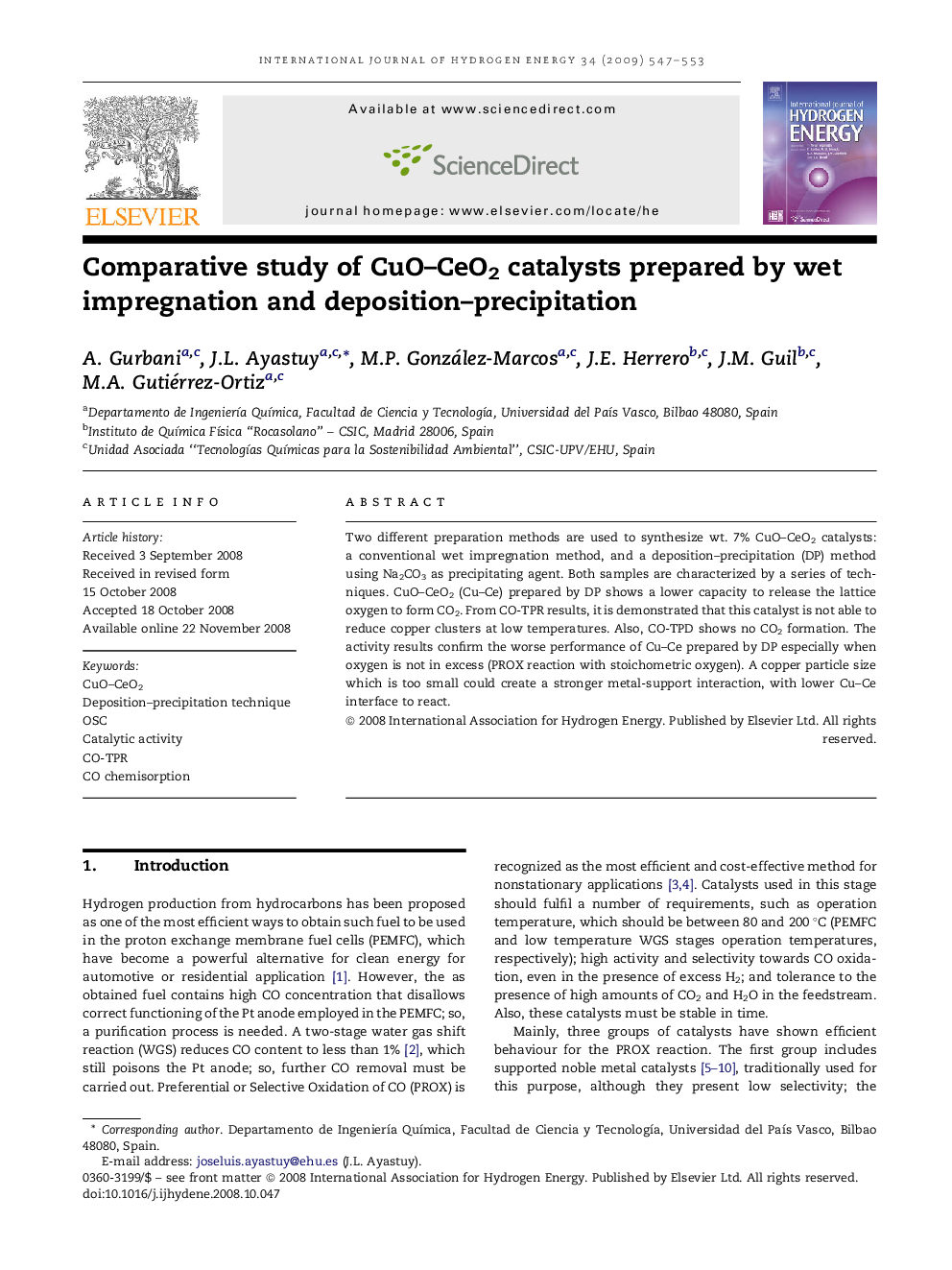| Article ID | Journal | Published Year | Pages | File Type |
|---|---|---|---|---|
| 1278104 | International Journal of Hydrogen Energy | 2009 | 7 Pages |
Two different preparation methods are used to synthesize wt. 7% CuO–CeO2 catalysts: a conventional wet impregnation method, and a deposition–precipitation (DP) method using Na2CO3 as precipitating agent. Both samples are characterized by a series of techniques. CuO–CeO2 (Cu–Ce) prepared by DP shows a lower capacity to release the lattice oxygen to form CO2. From CO-TPR results, it is demonstrated that this catalyst is not able to reduce copper clusters at low temperatures. Also, CO-TPD shows no CO2 formation. The activity results confirm the worse performance of Cu–Ce prepared by DP especially when oxygen is not in excess (PROX reaction with stoichometric oxygen). A copper particle size which is too small could create a stronger metal-support interaction, with lower Cu–Ce interface to react.
